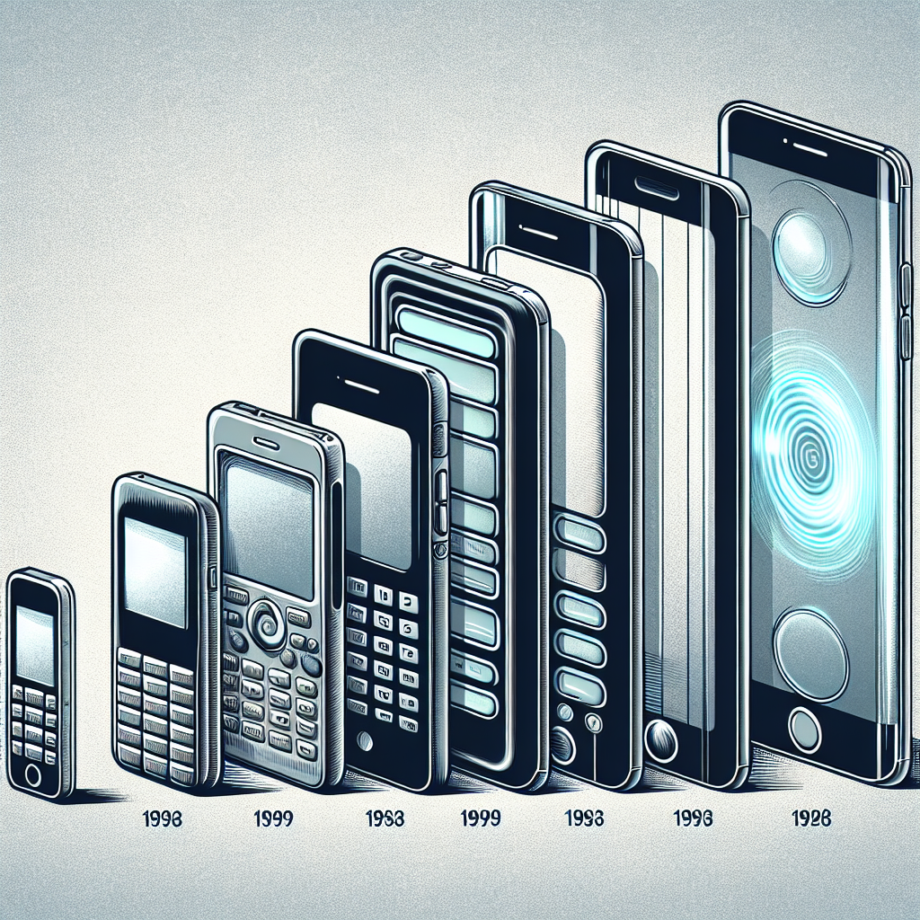
The evolution of smartphones has been nothing short of revolutionary, transforming how we communicate, work, and entertain ourselves. From the infancy of mobile phones in the late 20th century to the sophisticated devices we carry today, the journey has been remarkable and indicates an even more exciting future. This article delves into the significant milestones in smartphone development and speculates on what’s next in this ever-evolving industry.
Early Days: The Humble Beginnings
The first mobile phones were bulky, expensive, and designed for basic communication. Motorola’s DynaTAC, released in 1983, was a groundbreaking device of its time, though it resembled a brick more than the sleek smartphones we know today. These early phones primarily focused on voice communication, with limited additional features.
The Rise of the Feature Phones
The 1990s and early 2000s saw the advent of feature phones. These devices were more compact, affordable, and came with added functionalities like texting (SMS), basic gaming, and rudimentary internet access (WAP). Brands like Nokia, with its iconic 3310 model, dominated this era, pushing the boundaries of what mobile phones could do.
The Birth of the Smartphone
The true smartphone revolution began with the introduction of the iPhone by Apple in 2007. Steve Jobs’ vision of a phone that combined a music player, internet communicator, and cellphone was revolutionary. The iPhone’s touch screen interface, app ecosystem, and sleek design set new industry standards and spawned a new tech era. Google’s Android platform soon followed, offering a versatile and customizable operating system that democratized smartphone use.
Rapid Advancements: The 2010s and Beyond
The 2010s marked an era of rapid innovation. Smartphones became more powerful, incorporating multi-core processors, high-resolution cameras, and advanced sensors. These devices started to replace multiple gadgets, functioning as cameras, GPS devices, and personal assistants all in one. The introduction of 4G networks further amplified their capabilities, enabling high-speed internet access and seamless streaming services.
Key Trends Shaping Modern Smartphones
- Camera Technology: Today’s smartphones boast camera setups rivaling professional equipment. Features like multiple lenses, AI-enhanced photography, and high-resolution sensors have made smartphone cameras a central focus.
- Biometric Security: Fingerprint scanners, facial recognition, and other biometric security measures have transformed smartphone security.
- AI and Machine Learning: Integration of AI has optimized user experiences, from personalized recommendations to intelligent voice assistants.
- Foldable Phones: Brands like Samsung have introduced foldable smartphones, merging the portability of phones with the utility of tablets.
- 5G Connectivity: The rollout of 5G networks promises faster speeds, lower latency, and enhanced connectivity, paving the way for new applications and services.
The Future: What’s Next for Smartphones?
The future of smartphones is poised to be just as transformative. Here are some trends and technologies that could define the next generation of devices:
Augmented Reality (AR) and Virtual Reality (VR)
AR and VR technologies are expected to become more integrated into smartphones. These technologies will enhance gaming, shopping, and real-world applications by overlaying digital information onto the physical world.
Advanced AI Integration
AI will become even more integrated, providing smarter, more intuitive user experiences. From enhanced voice assistants to predictive text and beyond, AI will continue to shape how we interact with our devices.
Enhanced Biometric Authentication
Future smartphones may incorporate advanced biometric methods such as retina scanning, DNA recognition, and more, ensuring unparalleled security.
Flexible and Transparent Displays
Innovations in display technology could lead to devices with fully flexible and even transparent screens, allowing for new form factors and use cases.
Increased Focus on Sustainability
As environmental concerns grow, future smartphones are likely to emphasize sustainability. This could include using recycled materials, longer battery life, and easier repairability.
Conclusion
The evolution of smartphones has been a testament to human ingenuity and the relentless pursuit of better technology. From rudimentary communication devices to multifunctional smart tools, smartphones have drastically altered our way of life. As we look to the future, it’s clear that the smartphone’s journey is far from over. With innovations like AR, advanced AI, and sustainable design on the horizon, the next chapter in the evolution of smartphones promises to be even more exciting.
